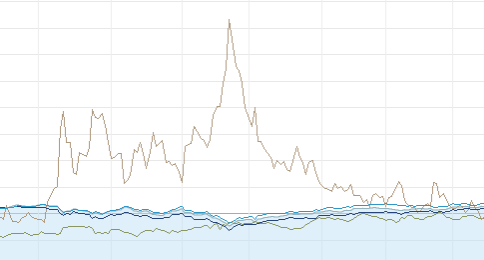The Black Ink Team's Guide To Stock Market Indexes
by Black Ink Team

For farmers, if they want to guess how well next year's harvest will go they turn to almanacs. With container ship captains, if they want to predict how calm the seas on their next journey will be they look at satellite imagery. Investors use 'indexes' (or 'indices,' depending on whichever you think is more correct) like how farmers would use almanacs or how container ship captains would use satellite imagery. That is to say that, just like almanacs and satellite imagery, indexes provide a wide view of the current state of affairs for a given zone, climate, etc. More accurately though, they provide a ballpark estimate for how well businesses in a certain geographical location or industry are doing, when compared to their past overall performance.
The bottom line for investors is risk, which is why investors use indexes: they simulate risk. When an index rates highly that means the stocks it is based on are low-risk bets, and vice versa. The calculations used to generate indexes range from very simple to very complex. For example, the NYSE Arca Major Market Index (XMI) which represents twenty 'Blue Chip' (big industrial company) stocks is very simple to calculate: it is a price-weighted index, meaning you just add the stock prices together and divide by twenty. On the other hand, the Dow Jones Industrial Average (DJIA), which tracks 30 large US companies, is calculated by using a special 'divisor' which is a proprietary instrument that is changed to reflect certain fluctuations (such as 'stock splits') that would inevitably skew the final result. Different indexes get listed on different stock market 'exchanges' (regional marketplaces for dealing securities).
While most indexes aim to provide estimates for current performance, some are built to give investors an aggregated look at current 'volatility' (how many standard deviations away-from-the-norm recent projections have fallen). These indexes generally get used in combination with regular indexes, to get a look at the whole story. Another special type of indexes is called a 'total stock market index' which is when they combine every publicly traded stock on a particular exchange. The Wilshire 5000 falls under this category.
It is impossible to directly invest in an index, but if you so choose you can directly invest in their respective activity. For example, you can invest in 'index funds' which are mutual funds with portfolios designed to mirror certain indexes. Or, you can buy ETF stocks (exchange-traded funds) that also mirror certain indexes. For both of these options there are other options: you can trade 'futures' of them, which are agreements you make to buy them once they hit a specified price, or you can buy 'options' for them, which are special contracts that let you sell them at a specified price on a future date. Sometimes index funds fail to match the index they are based on successfully, because they are leveraged inconsistently with how the index is weighted; when this happens, it is called a 'tracking error.'
